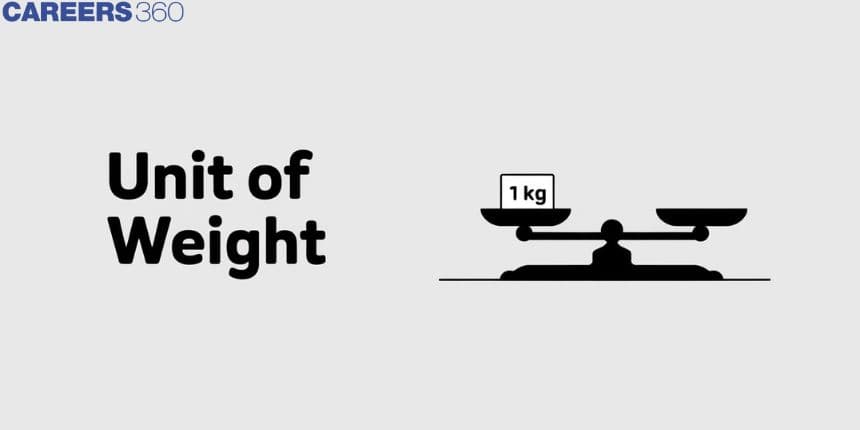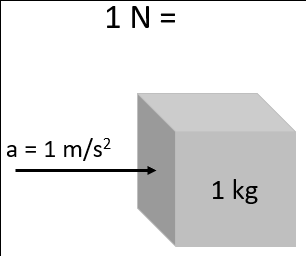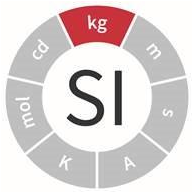Unit of Weight - SI Unit, CGS Unit and Other Units, FAQs
In this article, we will talk about the unit of the weight, the SI unit of the weight, the standard unit of weight, cgs unit of weight and the specific weight units.
This Story also Contains
- What is the SI unit of weight?
- SI Unit of Mass
- What is unit weight?(or Specific weight)
- Specific weight units
- What is the basic unit of weight?
- Difference between the SI Units Of Mass and weight.
- ALL units of weight


When we talk about the unit of weight, it sounds confusing. The reason is because weight is measured in terms of force, i.e, Newton whereas the standard unit of mass is Kilograms. We link both weight and mass with each other. However, they are scientifically two different quantities. Similarly, we often get confused about the unit of weight. Now, let’s discuss the difference between weight and mass and also we will discuss the unit of weight and mass.
Also check-
What is the SI unit of weight?
SI Unit of weight is Newton(or we can say that the Standard unit of weight is Newton)
We have different weight measurement units but still we study the SI unit of weight because SI units are standard units and are acceptable globally. It is a fixed and uniform way of measuring any physical quantity. Therefore, the SI Unit of weight is Newton or we can say that the Standard unit of weight is Newton. We define newton as “It is the necessary force that is provided to a mass of one kilogram with an acceleration of one metre per square second .”
As we know that the SI unit of weight is Newton. Newton is a derived unit and it can also be expressed in SI base units as kg⋅m/s2

Formula of weight : We can calculate the SI unit of weight or the Standard unit weight using the formula given below.
W = F =m g
Where, W = weight[What is the symbol for weight?]
F = Force(net force/external force)
m = mass
g = acceleration of gravity
m = W ÷ g [convert weight to mass]
FORMULA FOR UNIT OF WEIGHT
1 N = 1 kg ms2
Hence, it tells that the SI unit of weight(or the standard unit of weight) i.e, is we require 1N force to move a body of mass 1 kilograms by an acceleration of 1 metre per second square.
The table includes the different weight measurement units such as the SI unit of weight, CGS unit of weight, and the dimension of weight:
SI unit of weight | N |
SI base unit of weight | kg.m.s-2 |
CGS UNIT OF WEIGHT | dyne |
DIMENSION OF WEIGHT | MLT-2 |
CGS Unit of Weight – Dyne. CGS unit implies cm-g-s, where the weight becomes 1 g cm s-2. We can also calculate dyne by dividing 1 N by 10000.
Related Topics Link, |
Other Unit of Weight
Other units of weight known to us are pound-force (lbf), slug, gram, amongst others.
Conversion of The Units Of Weight
1 g = 0.001 kg |
1 mg = 1.010-6 kg = 1.010-3 g |
1 centigram = 1.010-5 kg = 1.01023 g |
1 metric ton = 1.0103 kg[1 unit to ton] |
1u=1.6605402E-27 kg[1 unit kg]
SI Unit of Mass
The SI unit of mass is kilograms.[Don’t get confuse it with the SI unit of weight or the standard unit of weight i.e, Newton]
As we know that the standard unit of weight is Newton. But there are many different units systems. Such as the specific weight units and the basic weights.

What is unit weight?(or Specific weight)
The specific weight is also known as the unit weight.
Specific weight is the weight per unit volume of any material.
Also Read:
Specific weight units
We commonly use a value of the unit weight of water. And value on Earth at 4 °C is 9.807 kN per metre cube.It is also known as specific weight for water.
The terms specific weight(or specific density) is also used to measure relative density. Gamma(γ), commonly known as a specific weight symbol.
We define specific weight or the unit weight (γ) of a material as the product of its density ρ and the gravity(standard) g:
γ = ρ g[THE UNIT WEIGHT FORMULA]
Unit of density = kg/m3
cgs unit of density= g/cm^3
gravity(standard)= m/s2
cgs unit of g = cm/s^2
What is the basic unit of weight?
Pounds(lb) is the basic unit of weight.
Difference between the SI Units Of Mass and weight.
The SI unit of mass and weight are as follows:
The SI Unit of mass or the MKS unit of mass is Kilograms & the SI Unit of weight is Newton
(1 N = 1 kg ms2)
cgs units of mass and weight:
cgs unit of mass is grams and cgs unit of weight is dyne.
ALL units of weight
The SI Unit of weight/ standard unit of weight is Newton or we can say that the weight is measured in Newton.
The cgs unit of weight is dyne.
The base unit of weight is kg.m.s-2
The basic unit of weight is pounds(lb)
unit of unit weight is N
Common units of weight are kg, g, mg, etc.
Hence, we conclude that the standard unit of measuring weight in India and all over the world is Newton(N). The unit of weight in SI system is Newton everywhere. Also, the standard unit for measuring weight is Newton as well.
Also read -
- NCERT Solutions for Class 11 Physics
- NCERT Solutions for Class 12 Physics
- NCERT Solutions for All Subjects
NCERT Physics Notes:
Frequently Asked Questions (FAQs)
Weight on the Moon is 16.5% of what we would experience it on Earth. Or we can say, if my weight is 100 kg on Earth, then my weight on moon will be only 16.5 kg .
The SI unit of weight is called Newton.
The standard unit of weight in Maths is also Newton(N).
Pounds(lb) is the basic unit of weight.
The SI and cgs unit of weight are Newton(N) & Dyne.
weight is measured in Newton.
Newton
The SI Unit of mass and weight in terms of physics is Kilograms and Newton.